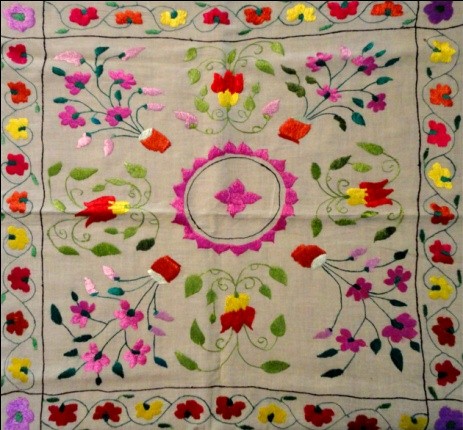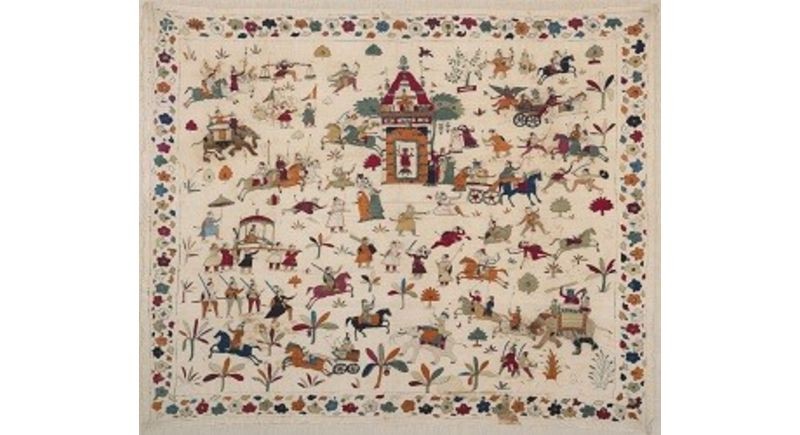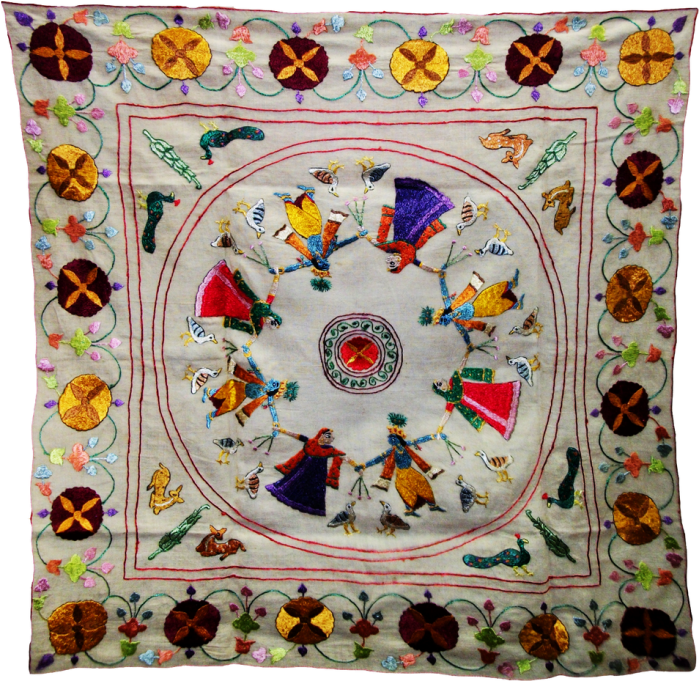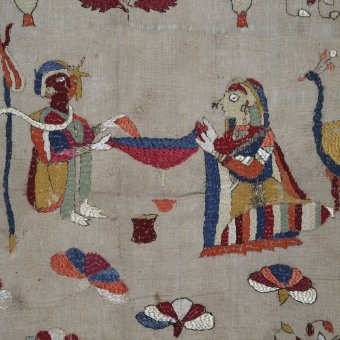
Crafts of India: Chamba rumals
Written by Hema Guha

The Indian subcontinent really abounds in various forms of fine arts and crafts be it the miniature paintings, Tanjore paintings, metal or the woodcrafts. It is also interesting to note that most of the art forms were patronized by the rulers, kings or chieftains or they were practiced as a ritualistic part of the people’s daily life. The artisans were nurtured and cared for so much by the rulers that the art forms reached their zenith and flourished till the beginning of the 20th century. Most of them were almost at a dying stage till a few years ago, when Craft councils and some visionaries revived them. One such art form, which has seen this revival, is the art of embroidery known as ‘Chamba Rumals’.
Although embroidery as an art form is well known and highly developed throughout the world, it is mostly done on personal items like garments, draperies and utility items. But only in the region of the hilly town of Chamba, one comes across square pieces of cloth with exquisite and neatly executed embroidery on them, which is a sophisticated art in itself. Originally intended as coverings for the offerings made to Gods or guests, they came to be widely used as scarves or presented as works of art. This gave them, the name ‘rumals’ meaning kerchief.

These rumals are square or rectangular and seldom circular in shape. Executed by the womenfolk with much care and devotion, they were practiced throughout the hill states of Kangra, Basholi, and Nurpur. But it came to be specifically associated with Chamba owing to the patronage given by the Rajput rulers of this region.
Chamba is a small valley in the Western Himalayas overlooking the river Ravi on one side and the great Himalayas on the other. King Sahila Varman founded the city in the 10th century A.D. and it was always well known for ancient temples and woodcarvings. It was also well connected with the other art centers like Kangra and Basholi. The art of ‘chamba rumal’ seems to have flourished during the 18th century and continued till the beginning of the 20th century. This was also the period during which the Pahari miniature paintings flourished as an art form.

Nowhere else would we find the art of embroidery to be so closely related to the art of painting so much so that seen from a distance, they look like soft velvety paintings except for the surface of the white linen beneath. On close scrutiny, one sees the soft satin stitches in silken thread worked deftly with nimble fingers.
These embroidered rumals seem to be the extension of the Pahari miniature paintings of Kangra, Guler or Guler-Basholi kalam, which are known for certain characteristic feature , namely, the expressive face of the humans, the sloping hills, plantain trees or the trees of the hills like the Cyprus and the pine. The theme of the rumals were also taken from the Indian texts like the Bhagavata Puranas, Geetha Govinda, Krishna Leela, epics like Mahabharatha and Ramayana, some social scenes like marriage processions, arrival of the bridal pair, nayika bhedas, hunting scenes etc.
The women seem to have taken the help of artists for making the initial drawings. The artist has drawn the drawing with charcoal and also suggested the colours. Whoever may have drawn the drawing, the dexterity with which the women have used the needle to work on the drawing is simply amazing. Even very tiny areas covering the hand or feet are done in separate colors of thread while the ornaments around the neck in another color just as an artist uses the brush.

The embroidery was done by a method known as ‘dorukha’ involving double satin stitch done simultaneously on both sides of the cloth so that the space on both sides get filled up. The satin stitch in embroidery is used to cover-up large areas spread over within a circular area. Some rumals have also been executed on the pattern of phulkaris, which is another form of embroidery. In such cases, even the flowers are done in geometrical patterns and the entire rumal has been worked over. The most common one is the ‘bagh’ or garden design.
The base cloth used for making rumals was mal mal made in Punjab or khaddar and the thread used was untwisted silk thread from various districts of Punjab. The design was drawn on the unbleached cloth with charcoal. The borders were generally decorated with floral patterns. The center stage was normally occupied by figures. In some rumals, different scenes in different panels are depicted thus making a cohesive pattern of the whole story.
It is so interesting how even a very simple piece of cloth can be a canvas for exquisite embroideries thereby resulting in creation of exquisite rumals. The art of embroidery was also perfected to reach a level that today they are preserved in museums such as The National Handicrafts Museum and the National Museum in New Delhi, both of which have specimens of these.
